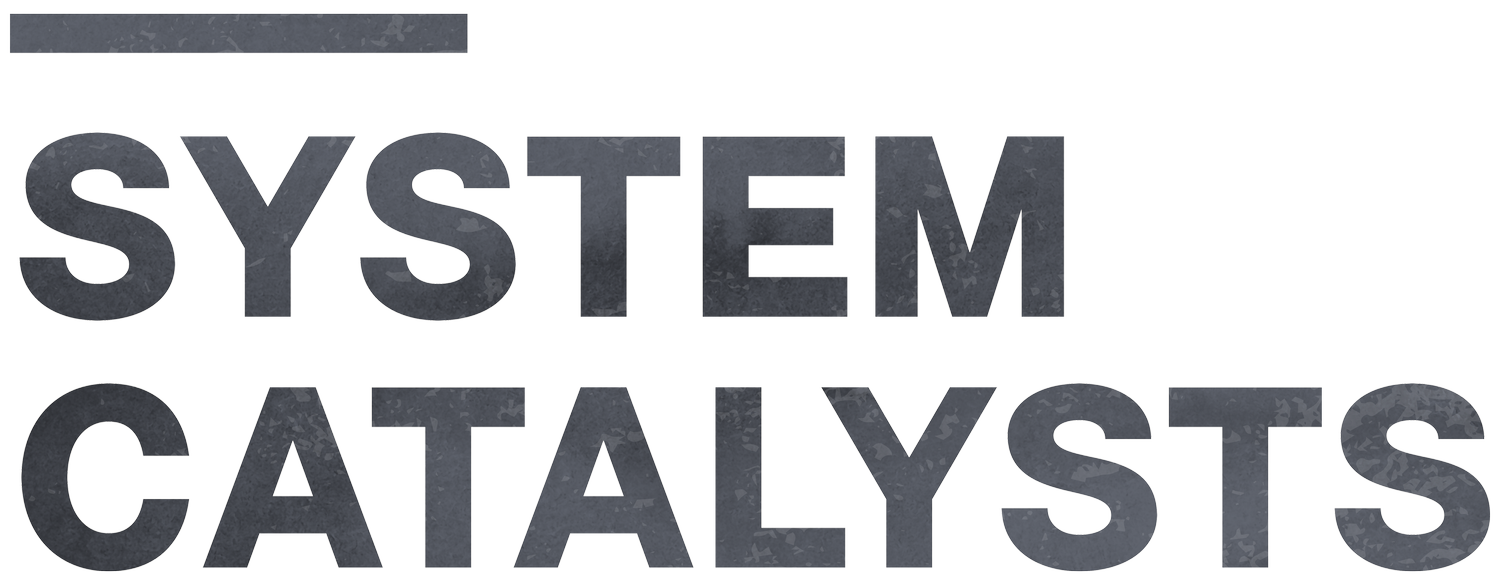
Want to be a System Catalyst?
10 things you need to know
when tackling problems that are really big, persistent, and complex, there is no “silver bullet” solution.
Throwing a lot of money at a powerful new medicine, a new antipoverty tool or an innovative educational technique might make a dent, but it won’t address the root cause. Because this approach often falls short, a new model for social progress has emerged. It’s based on systems change thinking— which looks at the problem holistically, considers all the underlying structures that shape it, and draws upon diverse partners from many walks of life. But implementing such an approach is not straightforward.
That is why we created System Catalysts, a podcast that goes behind the scenes to uncover models for systems change that are locally driven, network supported or LDNS. Our podcast tells first-hand stories of leaders inside organizations working on some of the worlds’ biggest challenges. We offer strategies on working through complexity and explore the tools that System Catalysts are using. These catalysts are defining, mapping, and measuring problems as well as attracting, inspiring, and collaborating with allies and with the wider world.
Based on 50+ interviews already under our belt, here are a few important themes for consideration when thinking about the challenge you are working on:
Avoid preconceived solutions. Engage with problem solvers and those affected to understand the issue, then identify how your work can complement existing efforts for maximum impact. For Curt Ellis from FoodCorps, it was all about engaging with various stakeholders to understand the food and education systems (min 26:51).
1. Listen to Understand the Issue and Identify Bottlenecks
Collaborate with proximate leaders from the affected group or those significantly influenced by it. Tailor your solutions to the specific context. This is the essence of being locally driven. For instance, Teresa Hodge founded Mission:Launch based on her personal experience with incarceration and the challenges she observed among women entering and leaving prison (min 5:54). Even when you are not proximate to the issue through your personal experience, you can find those who are. Jessie Chiliza, from the Charlize Theron Africa Outreach Project, , found Cookie Edwards, a leader proximate to the issue of GBV, through conversations with academics, government leaders, and other nonprofits (min 7:37).
2. go proximate
Unite key individuals and organizations to address the problem. Potential partners include NGOs, government agencies, businesses, academic institutions, religious groups, and others. Together, these stakeholders can help create a powerful solution. For instance, The Freedom Fund partnered with hundreds of frontline organizations to fight modern slavery, impacting over 1 million people. Their CEO, Nick Grono, shared how this approach helped them reduce bonded labor since their first program in Northern India (min 7:06).
3. partner, partner, partner
Establish a specific, measurable outcome with all stakeholders present. For FoodCorps, it is to provide 50 million children in the U.S. with access to food, education and nourishing food by 2030. Their Co-CEO, Dr. Harvey shared how they are keeping themselves accountable in reaching that goal (min 13:33).
4. define your goal
Data is essential to measure progress and know when to pivot. Ensure you have a system in place to gather information and consider sharing it across organizations too. Community Solutions has housed nearly 180 thousand people by using real-time data from several key players. Their CEO, Rosanne Haggerty, explained to us what makes this approach so effective in solving homelessness (min 14:13).
5. use data
Conveying your impact is crucial for fundraising, finding more partners, and amplifying your mission. As Sarah Austin Jenness from the Moth shared with us, personal stories can help people relate to the issue and point to solutions (min 16:19).
6. be a storyteller
Maintain regular communication with collaborators to exchange best practices, resources, and progress updates. Prioritize openness, trust, and inclusivity. This is the foundation of being network supported. One way to do this is through unifying principles, like the ones Teach for All shares across their 62 partner organizations (min 15:21).
7. be the collaborative glue
Share knowledge, tools, and resources once you’ve found a successful approach. Encourage others to adopt and spread your solution. Giving Tuesday has been able to grow exponentially, raising 3.1 billion in 2023, because of their philosophy of letting others run with their idea (min 29:34).
8. create a movement that moves without you
Advocate for policy and institutional changes that support system transformation. Marc Solomon, who spearheaded the marriage equality movement, reveals the strategies he used to convince people across the political spectrum that same-sex marriage should be legal (min 11:40).
9. policy and institutional change
Recognize small achievements to keep momentum. Expand successful interventions for broader system-wide impact. After GirlTrek achieved their goal to inspire a million Black women to walk for their health by 2020, they celebrated and moved on to advocate for policy change (min 31:02).
10. celebrating progress and scaling impact
Systems change is messy and requires patience, persistence, and a willingness to navigate uncertainty.
By applying these principles, you can contribute to meaningful and sustainable transformations of even the largest systems. If you’d like to learn how these principles are put into practice, we recommend you check out the System Catalysts podcast.






